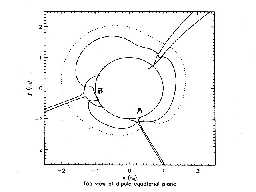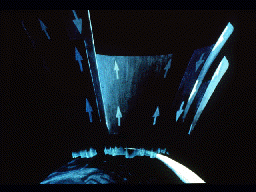
L. Frank from Dynamics Explorer
Related links:
Neptune Aurora
Aurora has been seen in the atmosphere of Neptune which is centered around the magnetic pole, as it should be for type-A aurora, nevertheless Neptune mostly has type-B aurora similar to the SAR ARC of Earth (shown here).
The rings of Neptune sweep away much of the particles in the area which is supposed to be the plasmasphere. Therefore there is only a small plasmasphere containing trapped particles, and a lot less plasma to be forced from the magnetosphere down into the atmosphere to create the aurora.
No radio signals from Neptune have been detected which relate to aurora or auroral processes, and scientists are still working to understand the currents which cause aurora.









